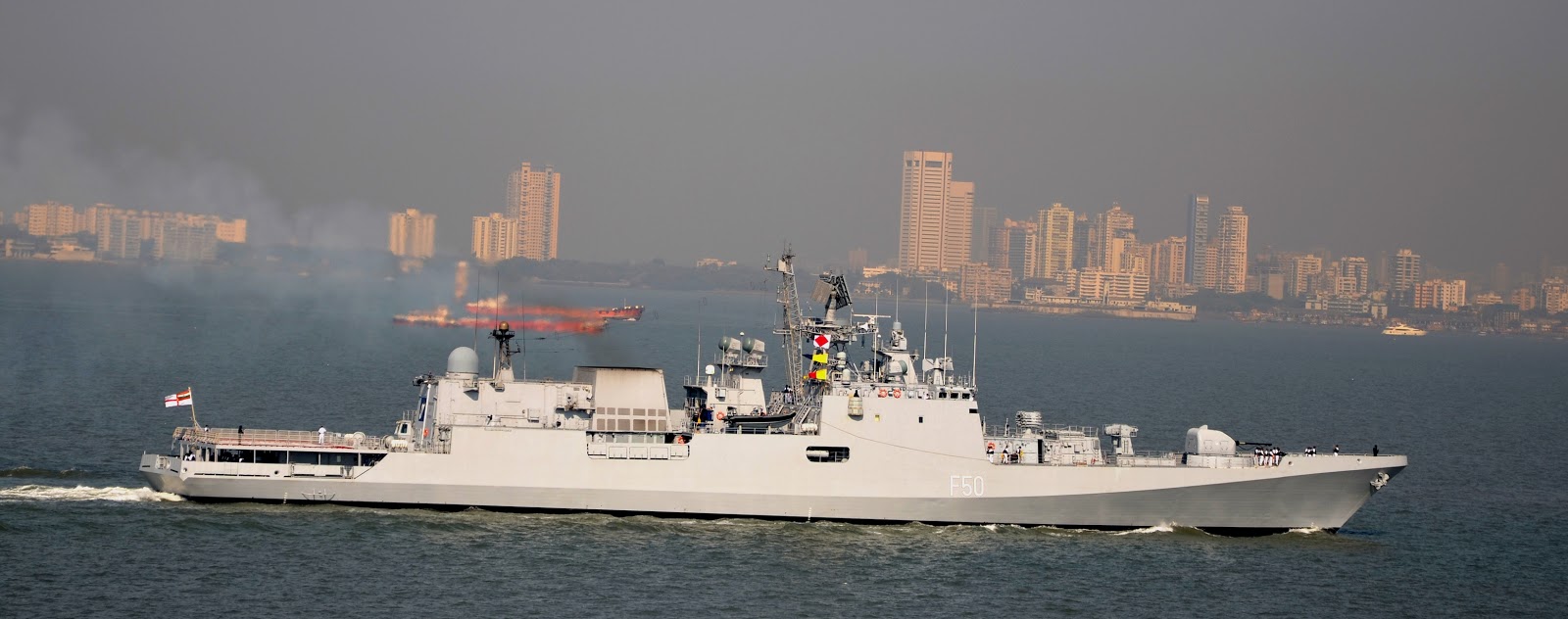
INS Tarkash in Mumbai
Stealth ships are built using construction techniques which make the ship more difficult to detect by various sensors -- radar, sonar, infrared and visual means. These techniques are borrowed from stealth aircraft technology, although some aspects such as wake and acoustic signature reduction are unique to stealth ships' design.
Reduction of radar cross section (RCS), visibility and noise is not unique to stealth ships; visual masking has been employed for over two centuries and RCS reduction goes back to American and Soviet ships of the Cold War era. One common feature is the inward-sloping tumblehome hull design that significantly reduces the RCS.
India added more teeth to its navy when it inducted a new Russian-built multi-role stealth frigate, carrying the BrahMos supersonic cruise missile, into its fleet, adding to its recently growing blue water capabilities.
The warship will join the Western Fleet of the Indian Navy by the end of December and its first commander is Captain Antony George, an anti-submarine warfare specialist. The new guided missile frigate, christened INS Tarkash, was handed over to the Indian Navy by Russia's United Shipping Corporation at Kaliningrad in western Russia, the seat of its Yantar Shipyard in the Baltic.
India's Mumbai-based Western Naval Command chief Vice Admiral Shekhar Sinha commissioned the upgraded Talwar-class warship in the presence of Indian Ambassador to the Russian Federation Ajai Malhotra. "Frigate Tarkash is the second in the three Project 11356 ships built by the Yantar Shipyard under a Russian-Indian contract," United Shipbuilding Corporation spokesman Alexei Kravchenko was quoted as saying by Xinhua from Moscow.
RIA Novosti added from Kaliningrad that Russia and India had signed a $1.6-billion contract for constructing the three modified Krivak III class (also known as Talwar class) guided missile frigates in 2006. The first of the three upgraded Talwar class warships, INS Teg, had been commissioned into the Indian Navy in April 2012. It had successfully launched the 290-km-range BrahMos missile, the India-Ruasia joint venture, during tests in October this year.
Yantar Shipyard is currently building the third frigate, INS Trikand, under the same project. The warship is going through dock trials and it will be delivered in the summer of 2013 after completing the sea trials in the Baltic. Indian Navy officers said in New Delhi that this series of three frigates have an advanced combat suite and an optimal blend of Russian and Indian cutting edge technologies. This not only bolsters the Indian Navy's role as a key facilitator in promoting peace and stability in the Indian Ocean Region, but also embodies the dynamic character of Indo-Russian military technical cooperation, they said.
Besides BrahMos, the array of weapons and sensors on board the ship include:
-
Advanced Shtil surface-to-air missile system
-
Two upgraded Kashtan 100-mm medium range air-defence guns
-
30-mm close-in weapon system - optically controlled
-
Two twin 533-mm torpedoes,
-
Rocket launchers
-
Advanced electronic warfare and communication
-
Anti-submarine warfare helicopter.
The Project 11356 frigates were developed by the Severnoye Design Bureau and these carry first-strike missile system. Russia has previously built three Talwar class frigates for India -- INS Talwar, INS Trishul and INS Tabar.
It is also refurbishing and refitting the INS Vikramaditya aircraft carrier (erstwhile Admiral Gorshkov) for India with completion scheduled for mid-2013. The carrier's reconstruction has been repeatedly hampered by various technical problems, including a recent malfunction of its propulsion system boilers.